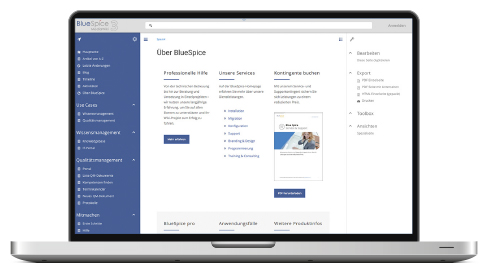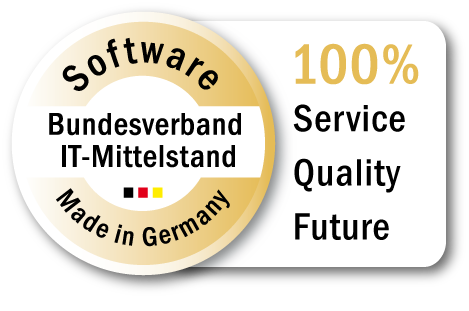The 10 home office applications you really need
22. April 2020
Distributed working has long been an important issue for many companies. But concerns about the climate and the current Corona crisis have given a powerful boost to digital transformation. We are now faced with the challenge of ensuring that employees can work from home or on the road whenever possible. Here is my subjective report on what is really important.
Richard Heigl
CEO of Hallo Welt! GmbH, historian, Wiki expert, book author and speaker. Born in 1971 in Ettal (Bavaria), he now lives in Regensburg and regularly blogs and tweets on the topics of wiki, social web and information technologies.
1. VoIP telephony
Although the phone is still one of the top communication channels in most companies, it’s hard to believe how many employees in the home office cannot be reached by phone. Yet, we want and need to call customers and prospects from home as if we were sitting in the office. Therefore, companies from a certain size on need a phone system that supports such spatially distributed work properly and does not just forward calls: It’s all about voice mail, phone books, and perhaps also the possibility of holding audio and video conferences with screen sharing and team chat. The market is full of offers and it is easy to lose track.
There are a number of good VoIP solutions. Sipgate is one of the well-known providers here. But my favorite is the solution from Pascom: a mature open source software that comes out of Deggendorf in Bavaria. Hosted or in-house, with a very fair rate.
2. Chat and messenger
Next, we need an internal communication channel for short inquiries and for sharing links and documents with colleagues. For example, a secure chat and messenger system for company-wide messages, ideally with extra rooms for individual teams.
Often, these applications also integrate a chat module. But we have made the experience that the productive use of tools and their acceptance depend a lot on aesthetics and the “fun factor”. That’s why we decided to use Rocket.Chat. Privacy concerns also played a role: We can run Rocket.Chat on our own server and even hold internal video conferences with Jitsi directly from the application.
3. Video conferencing
Here, too, numerous solutions come piggybacked with other applications.
Many favor Microsoft Teams, which is currently being pushed into the market at great expense. Mainly small companies currently use services like Zoom, which has gotten some attention lately because of privacy concerns. Skype has also made a sudden comeback. We use the open source solution Jitsi for internal communication. Here, too, data protection was the main argument for us, since we can operate our own Jitsi server.
In communication with customers, for webinars, training or support, we have mainly been using GoToMeeting or TeamViewer for a long time now, because they are optimized for these use cases.
4. E-mail and groupware
There is not much to explain here: E-mail remains the appropriate channel for official letters with customers and colleagues, for handing over tasks and for more extensive notifications. Of course, you need access to your calendar and your tasks at home and on the road.
Microsoft Exchange and Outlook are still considered “best of breed”. However, Open Xchange is an interesting open source alternative on the market. The only requirement is Linux as an operating system.
5. Office programs
For word processing and spreadsheets, Microsoft Word and Excel are still the gold standard when it comes to office applications, making them the tools of choice in most companies.
With Office 365 (soon to be Microsoft 365) there has long been a platform-independent subscription service. Alternative approaches such as LibreOffice (hosted by Collabora, for example) or ONLYOFFICE have existed for a very long time. Google Docs also often serves as an interim solution. But, overall, the world is still waiting for an open source solution that really comes close to these established Microsoft products.
6. Document management and cloud sharing
The next task: You need to securely share individual documents and files with your employees, partners, and customers. This works best via cloud sharing services.
For companies, ownCloud and Nextcloud in particular present themselves as reliable software houses. With ownCloud, you are bringing the first serious enterprise solution into your company. Nextcloud — a spin-off of ownCloud — is the community’s favorite and also has more features. Both systems are open source and can also run on your own servers. Both come with many additional modules. If you need a real document management software, you should have a look at agorum.
7. VPN
You also need to access the company’s file system or internal services over a secure, encrypted connection to the company network
Here, providers like NordVPN are widely used. For smaller companies, OpenVPN is a solution with which we have had very good experiences so far.
8. Ticket system
In the end, it’s all about managing tasks — like customer inquiries, orders, or even internal work packages that have to be prioritized, assigned, tracked and invoiced. After a certain point, there is no way around a ticket system (also known as an issue tracking system).
In your research, you will (among others) come across Jira — which, however, is quite expensive. For larger and more complex tasks we use EasyRedmine, a convincing enterprise version of the open source classic Redmine. For smaller companies, the easy-to-use system Zammad from a dynamic company in Berlin — which clearly shows its Lower Bavarian roots with the product name Zammad (colloquial for “together”) — can be a good choice.
9. Specialist applications
You know best, when it comes to the business applications for your department or your industry: Datev for financial accounting, a CRM for managing contacts, quotations, orders and invoices; versioning systems for software developers, and whatever else you need. Of course, these tools must also be accessible via the web and on mobile devices so that you can seamlessly do your work from home.
For me in marketing and sales, this is our CRM system CRM+, which is based on vTiger and developed by Brainformatik.
10. Wiki
Last but not least: the wiki! Here, your employees can find out in a central location how your company is organized: What products do we have and what is included with them? Which processes do we have in place? Who is responsible for what? All this information is entered straight into the wiki. You can document the entire management system and easily create IT emergency manuals. You can also manage and share your meeting minutes, project descriptions and how-to’s such as setting up VPN access, to name a few. You simply won’t be able to find these contents in Office documents when you need them — I bet you already know! And you also need a place to organize and share the knowledge you gain from your e-mails, chats and ticket systems.
The market leader here is still Confluence, which is aimed mainly at large companies. The world’s most widely used software is MediaWiki, and we developed BlueSpice MediaWiki for use in a business environment. In my opinion, we have the wiki with the best price-performance ratio. But that is something that everyone has to determine for themselves.

Share This Story, Choose Your Platform!
| Except where otherwise noted, news on this site is licensed under a Creative Commons Attribution 4.0 International license. |




